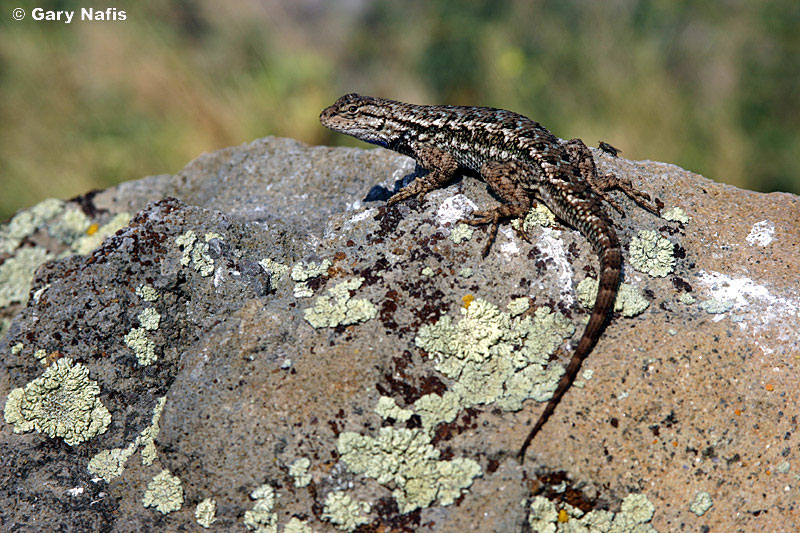Nutrition: What it eats
Sceloporus occidentalis are a crucial point of interest in food webs of the habitats in which they dwell. For the most part, these spiny lizards feed on invertebrate insects found in and around grasses, fences, logs and stumps. Some invertebrates include flys, spiders, ticks, grasshoppers, scorpions, and their personal favorite, crickets (Nafis, 2013). In one particular study done by Laura S. Inouye and her team, Western Fence Lizards were given three food sources to test for trophic consumption and accumulation of lead. This study showed that while the lizards preferred house crickets in laboratory settings and tolerated sow bugs and mealworms, they completely rejected earthworms. The refusal was so evident that in 14% of the recorded observations, individuals would actually bite into the earth worms then quickly retreat from their meal (Inouye et al. 2006). Jonathan M. Chase conducted a different study in which they measured the population density of grasshoppers in numerous areas. Abundance of such grasshoppers drastically decreased in typical habitats of S. occidentalis which is not contrary to hypothesized beliefs. The findings of such a study result in even larger implications, lack of grasshoppers in these areas results in amplification of plants and shrubs because the insects are not there to consume such resources (Chase, 1998). Ultimately this would be optimal for the lizards providing better protection.
In order to obtain these varying species as their prey, Western
Fence Lizards acquired certain characteristics. Sceloporus
occidentalis are known for their tremendous speed and
jumping ability which is crucial in the respect of catching
their prey (Nafis, 2013). They have evolved a large head and tremendous bite
force which has proven to be more effective in the process of
catching and keeping their prey (Buckley et al. 2010).
However, scientists have inquired that the maximum bite force
that is measured in these lizards is far larger than necessary
for the invertebrates that they consume. One would conclude that
this uncanny bite force would only be necessary to consume much
more physically demanding prey. Observations have attested to
occasional cannibalistic characteristics in which some S.
occidentalis individuals may consume smaller lizards,
including but not limited to their own species (Nafis, 2013).
This particular behavior may be able to explain the seemingly
unnecessary bite force maximum. However, these factors are not
the only ones defining their prey.
For Sceloporus occidentalis, size can also be a
determining factor in what and how they eat. In a study
executed by Barbara R. Rose and colleagues, mean prey size
selection varied between lizard species but even more
surprisingly, within the Western Fence Lizard species alone.
Rose’s data shows that mean prey size of S. occidentalis
ranges from 1-34 mm in adults and 1-13 mm in juveniles. While
there is substantial overlap, the adults’ prey range is much
larger than that of the juvenile. Prey size variation is shown
in age but not in sex. This particular study showed no
significant difference in prey size or selection in males versus
females (Rose, 1976).
Whether its grasshoppers or crickets, the interactions that
S. occidentalis have with their prey are crucial to the
niche in which they occupy. What they eat and how they eat it
is an extremely important topic of study in the lizard’s
habitats. Hopefully further research can help them optimize
their diet in a way that is beneficial for their surroundings.
